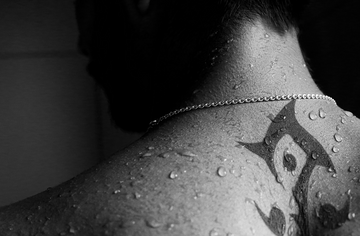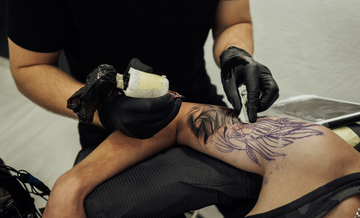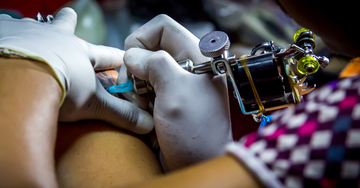Getting a tattoo can be an exciting journey of self-expression, but the pain involved is often a major concern. Tattoo numbing creams have become a popular solution to reduce discomfort during the process. However, many people wonder if using these creams might affect the tattoo’s quality or healing process. In this guide, we’ll explore the effects of tattoo numbing creams, their pros and cons, and how to use them effectively.
What Is Tattoo Numbing Cream?
Tattoo numbing cream is a topical anesthetic designed to numb the skin and minimize pain during the tattooing process. These creams typically contain ingredients like lidocaine, benzocaine, or prilocaine, which block nerve signals in the skin. When applied correctly, they can significantly reduce or even eliminate pain.
Does Tattoo Numbing Cream Affect the Tattoo?
1. Impact on the Tattooing Process
Numbing creams, when used properly, generally do not interfere with the tattooing process. However, certain factors can influence their effects:
- Thickness of the Skin: Overuse of numbing cream may temporarily alter the texture of the skin, making it feel rubbery or slippery, which could challenge the artist's precision.
- Type of Cream: High-quality numbing creams designed for tattoos are less likely to cause issues compared to generic or overly potent products.
2. Quality of the Tattoo
When applied correctly, numbing creams should not affect the final look of your tattoo. However, overuse or improper application can lead to:
- Uneven Ink Absorption: Some creams may create a barrier between the needle and the skin, causing ink to spread unevenly.
- Difficulty in Shading: If the cream is too thick, it can disrupt the artist's ability to create smooth gradients.
3. Healing Process
Most numbing creams do not negatively affect the healing process if they are specifically formulated for tattoos. However:
- Using creams with strong chemicals or fragrances can irritate the skin and slow healing.
- In rare cases, allergic reactions to the cream can cause redness, itching, or swelling, which may impact how the tattoo heals.
How to Use Tattoo Numbing Cream Correctly

1. Choose the Right Product
Look for creams explicitly designed for tattoos. Products containing 4-5% lidocaine are commonly used and safe when applied properly.
2. Apply Before the Tattoo Session
Follow these steps for optimal results:
- Clean the Skin: Wash the area with soap and water to remove dirt and oil.
- Apply a Thin Layer: Spread the cream evenly over the area to be tattooed. Avoid using too much, as it can create a slippery surface.
- Wrap with Plastic Film: Cover the area with cling film to trap heat and help the cream penetrate the skin. Leave it on for 30-60 minutes before the session.
3. Communicate with Your Tattoo Artist
Let your artist know you’re using numbing cream. They can adjust their technique if necessary to account for any changes in skin texture.
Pros of Using Tattoo Numbing Cream
1. Reduces Pain Significantly
The most obvious advantage is the reduction in pain, especially for sensitive areas like ribs, hands, or ankles. This can make the process more comfortable and less stressful.
2. Helps With Long Sessions
For tattoos that require hours to complete, numbing cream can make sitting for extended periods much more manageable.
3. Eases Anxiety
If you’re nervous about getting a tattoo, knowing you’ll feel minimal pain can help you relax and enjoy the experience.
Cons of Using Tattoo Numbing Cream
1. Potential Side Effects
Some people may experience side effects like:
- Redness or irritation
- Allergic reactions
- Nausea or dizziness (in rare cases)
2. Reduced Feedback During the Session
Pain serves as feedback during the tattoo process, letting you know if the artist is pressing too hard or if something feels off. Numbing cream can mask this feedback.
3. Temporary Effectiveness
Numbing creams typically last 1-2 hours. For longer sessions, the numbing effect may wear off, leading to discomfort midway through the tattoo.
Does Every Tattoo Artist Allow tattoo numbing cream?
Not all tattoo artists are comfortable working with numbing creams. Some artists believe these creams can alter the skin texture, making it harder to create clean lines or shading. Additionally, artists may feel that numbing cream masks the natural feedback they rely on to ensure the tattoo process is going smoothly.
If you plan to use numbing cream, always discuss it with your artist in advance. They can advise you on whether the cream is suitable for your chosen design and placement.
Alternatives to tattoo numbing cream for Pain Relief
If numbing cream isn’t an option, consider these alternatives:
- Over-the-Counter Pain Relievers: Medications like ibuprofen or acetaminophen can reduce inflammation and discomfort.
- Breathing Techniques: Deep, controlled breathing can help manage pain and keep you relaxed.
- Choosing a Less Painful Area: Opt for a tattoo placement with fewer nerve endings and thicker skin, such as the outer arm or thigh.
FAQs About Tattoo Numbing Cream
-
Can I use tattoo numbing cream for all tattoos?
Yes, but it’s most beneficial for sensitive areas or large, time-intensive tattoos. Always consult with your artist beforehand. -
Will the tattoo numbing cream wear off during the session?
Most creams last 1-2 hours. If your session is longer, the effect may wear off unless reapplied (with your artist’s consent). -
Can tattoo numbing cream ruin my tattoo?
When used properly, numbing cream typically doesn’t ruin tattoos. However, overuse or low-quality products may affect the final result. -
Are there numbing sprays available?
Yes, numbing sprays are another option and are often applied during the session. They’re useful for maintaining numbness after the cream wears off. -
Should I do a patch test before using numbing cream?
Absolutely! A patch test helps identify any allergic reactions, reducing the risk of irritation during the tattoo process.





